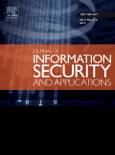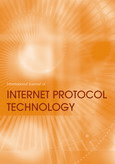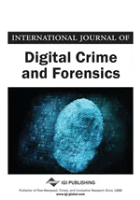
Journal of Computer Virology and Hacking Techniques
Scope & Guideline
Pioneering Research in the Battle Against Digital Vulnerabilities
Introduction
Aims and Scopes
- Cybersecurity and Malware Detection:
The journal emphasizes research on methods for detecting and mitigating malware threats, including the development of new algorithms, frameworks, and tools for proactive cybersecurity solutions. - Cryptography and Secure Communication:
Significant focus is placed on cryptographic techniques, including advancements in encryption methods, key exchange protocols, and the analysis of cryptographic systems to ensure secure communication. - Artificial Intelligence in Cybersecurity:
The integration of AI and machine learning techniques into cybersecurity practices is a core area of interest, particularly in automating threat detection, classification, and response strategies. - Network Security and Protocol Analysis:
Research on securing network protocols, identifying vulnerabilities, and proposing effective defenses against various types of network attacks is a vital part of the journal's scope. - Emerging Technologies and Threats:
The journal explores the implications of emerging technologies, such as the Internet of Things (IoT) and quantum computing, on cybersecurity, focusing on both the threats they pose and the security measures that can be implemented. - Human and Behavioral Aspects of Security:
Understanding human factors and behaviors in cybersecurity, including social engineering and user interactions with security systems, is also highlighted in the journal.
Trending and Emerging
- Post-Quantum Cryptography:
As the threat of quantum computing grows, research into post-quantum cryptographic methods has surged, focusing on developing algorithms that can withstand quantum attacks. - Machine Learning and AI for Cyber Defense:
There is a significant increase in publications employing machine learning and AI techniques for enhancing cybersecurity measures, including malware detection, threat classification, and automated response systems. - IoT Security Solutions:
The rise of IoT devices has led to an increased focus on security solutions specifically tailored for these environments, addressing unique vulnerabilities and attack vectors. - Adversarial Machine Learning:
Research surrounding adversarial attacks on machine learning models, particularly in the context of cybersecurity, is trending, as it explores the robustness of AI systems against malicious inputs. - Behavioral and Psychological Aspects of Cybersecurity:
Emerging studies are focusing on the human element in cybersecurity, exploring how user behavior impacts security practices and the effectiveness of various security measures.
Declining or Waning
- Traditional Signature-Based Detection:
Research focused on traditional signature-based malware detection techniques has decreased as new methods utilizing machine learning and behavioral analysis have gained traction. - Basic Cryptographic Protocols:
There has been a noticeable decline in research surrounding basic cryptographic protocols, as the field has progressed towards more complex and secure systems, including post-quantum cryptography. - Generalized Cybersecurity Awareness:
Discussions around generalized cybersecurity awareness without specific technical applications have become less frequent, indicating a shift towards more technical and applied research. - Legacy Systems Vulnerabilities:
Research addressing vulnerabilities in legacy systems has diminished, possibly due to the increasing focus on modern technologies and the need for more contemporary security solutions. - Static Analysis Techniques:
Static analysis techniques for malware detection are less frequently covered, as dynamic analysis and hybrid approaches have proven to be more effective in addressing current threats.
Similar Journals

Digital Communications and Networks
Innovating the future of communication technologies.Digital Communications and Networks, published by KEAI PUBLISHING LTD, stands at the forefront of research in the rapidly evolving fields of communication, computer networks, and hardware architecture. Since its inception in 2015, this open access journal has been committed to disseminating high-quality, peer-reviewed articles that contribute to technological advancements and academic discourse in these critical domains. With an impressive Impact Factor and achieving Q1 Quartile rankings in its relevant categories for 2023, it has established itself as a vital resource for researchers, professionals, and students aiming to stay ahead in a competitive landscape. The journal's robust standing is reflected in its notable Scopus rankings, underscoring its influence in Computer Science and related fields. As we look toward the future, the journal continues to invite innovative research that shapes the digital communication landscape until 2024 and beyond.

Journal of Computer Security
Fostering breakthroughs in secure computing practices.Welcome to the Journal of Computer Security, a premier publication dedicated to advancing the field of cybersecurity and digital safety. Published by IOS PRESS, this esteemed journal has been at the forefront of research since its inception, with a rich history spanning from 1992 to 2024. Based in the Netherlands, the journal aims to provide a reputable platform for researchers and professionals to disseminate innovative findings in various subfields, including computer networks, hardware architecture, and software engineering. With its current Q3 ranking across multiple categories and a focus on safety, risk, reliability, and quality, the journal plays a critical role in shaping contemporary discourse and fostering collaboration within the cybersecurity community. Though it is not an open-access journal, the Journal of Computer Security remains a vital resource for academics and practitioners alike, offering access to significant advancements and methodologies that guide the evolution of security practices worldwide. Engage with us and contribute to this dynamic field of study!

Telecom
Elevating the Conversation on Telecommunication AdvancesTelecom is an esteemed peer-reviewed journal published by MDPI, specializing in the fields of computer networks and communications as well as electrical and electronic engineering. Since its inception in 2020, this Open Access journal has provided a platform for innovative research and advancements in telecommunication technologies, making significant contributions to both academia and industry. With an impressive impact factor and a category rank of Q2 in the 2023 Scopus rankings, Telecom continues to be a valuable resource for researchers, professionals, and students seeking to engage with cutting-edge developments in telecommunication. The journal invites high-quality manuscripts that explore emerging trends, challenges, and solutions in the ever-evolving telecom landscape. Situated in Basel, Switzerland, Telecom is committed to fostering a global exchange of knowledge and serves as an essential conduit for advancing the discourse in telecommunications.

Journal of Information Security and Applications
Unveiling Insights in Information Security ExcellenceJournal of Information Security and Applications, published by ELSEVIER, is a premier outlet for cutting-edge research in the field of information security and applications. With a dedicated ISSN of 2214-2126 and an E-ISSN of 2214-2134, this journal ranks impressively in the top quartile (Q1) across multiple categories as of 2023, including Computer Networks and Communications, Safety, Risk, Reliability and Quality, and Software. The journal’s notable Scopus rankings further reflect its impact, holding positions within the top 15% in several engineering and computer science areas. Spanning a converged period from 2013 to 2024, the journal aims to disseminate high-quality research findings, facilitating a vibrant platform for scholars, practitioners, and students to engage with contemporary challenges in information security. Although not an open-access journal, the knowledge shared within its pages is indispensable for those dedicated to advancing the technological and theoretical underpinnings of security measures in various applications.

International Journal of Internet Protocol Technology
Pioneering Research in Internet TechnologiesThe International Journal of Internet Protocol Technology (ISSN: 1743-8209; E-ISSN: 1743-8217), published by InderScience Enterprises Ltd, is an esteemed periodical dedicated to advancing research in the realms of internet protocols and communication technologies. Established in 2005 and headquartered in the United Kingdom, this journal serves as a vital platform for scholars and professionals, providing insights into innovative approaches and emerging trends within the field. With a 2023 Scopus ranking placing it in the Q4 category for Computer Networks and Communications, it continues to contribute to an evolving digital ecosystem. Although the journal does not offer open access, its articles are accessible through institutional subscriptions and provide a wealth of knowledge that aids the understanding and development of internet protocols. Researchers, practitioners, and students will find a range of high-quality studies that explore critical issues and technological advancements shaping global digital communications.

Future Internet
Connecting Ideas, Shaping Tomorrow's InternetFuture Internet is a leading open-access journal published by MDPI, dedicated to advancing the field of Internet technologies and communication networks. Since its inception in 2009, the journal has provided a platform for rigorous research and innovative ideas in the context of the rapidly evolving digital landscape. Based in Switzerland, it has established itself as a prominent publication, earning a commendable Q2 ranking in the category of Computer Networks and Communications for 2023. With a Scopus ranking of #87/395 and a notable 78th percentile, Future Internet fosters interdisciplinary collaboration, making valuable contributions to the understanding of Internet systems, protocols, and applications. Researchers, professionals, and students alike will find a wealth of insightful articles addressing both theoretical foundations and practical implementations. The open-access format ensures that all readers have immediate and unrestricted access to high-quality research, facilitating knowledge dissemination and informed decision-making in academia and industry alike.

EURASIP Journal on Information Security
Delivering open access to groundbreaking security findings.EURASIP Journal on Information Security, published by Springer International Publishing AG, is a premier open access journal dedicated to the rapid dissemination of research findings in the field of information security. With an ISSN of 2510-523X and a strong reputation reflected in its 2023 quartile rankings—Q1 in Computer Science Applications and Q2 in Signal Processing—this journal serves as a critical platform for researchers, professionals, and students alike to explore cutting-edge advancements in security technologies and methodologies. Established in 2007 as an open access journal, it promotes accessibility and encourages collaboration among the global scientific community. The journal's objectives include fostering innovative research that addresses the complex challenges of information security in today's digital landscape. With its base in the United Kingdom, EURASIP Journal on Information Security is committed to contributing to the evolution of security practices, ensuring that its audience stays at the forefront of the discipline.

ISeCure-ISC International Journal of Information Security
Unveiling Insights in the Evolving Landscape of CybersecurityISeCure-ISC International Journal of Information Security, published by the Iranian Society of Cryptology, is a vital open-access platform dedicated to advancing the field of information security. Since its inception in 2009, the journal has strived to disseminate high-quality, peer-reviewed research that addresses contemporary challenges in information security, cryptography, and related computational disciplines. With an ISSN of 2008-2045 and an E-ISSN of 2008-3076, it has gained visibility in the academic community, evidenced by its Quartile 4 ranking across multiple categories such as Applied Mathematics, Computational Theory, and Information Systems. This journal aims to foster innovative solutions and theoretical advancements, targeting researchers, professionals, and students who seek to contribute to and learn from the latest developments in the field. By providing a venue for explorative and empirical research, ISeCure-ISC holds an important position in promoting knowledge and collaborative efforts within the global information security landscape.

Cryptography
Leading the Charge in Information Security AdvancesCryptography, an esteemed journal published by MDPI, focuses on the rapidly evolving fields of cryptography and information security, providing a platform for researchers and practitioners to share their findings and advancements. Since its inception in 2017, it has embraced an Open Access model, allowing unrestricted access to high-quality research articles, thereby fostering collaboration and innovation among academics globally. Based in Switzerland, this journal aims to cover a broad spectrum, from theoretical foundations to practical applications, contributing significantly to fields such as Applied Mathematics and Computer Science. Its impressive rankings in reputable databases like Scopus reflect its relevance and quality, holding a Q2 category in multiple disciplines, including Computational Theory and Mathematics and Computer Networks and Communications. With the continuous rise in importance of cybersecurity and data protection, Cryptography serves as a vital resource for professionals, students, and researchers dedicated to advancing knowledge in these critical areas.

International Journal of Digital Crime and Forensics
Unveiling Insights into Cybersecurity and Forensic PracticesWelcome to the International Journal of Digital Crime and Forensics, an esteemed publication spearheaded by IGI Global, dedicated to advancing research and disseminating knowledge in the crucial fields of cybersecurity, digital crime, and forensic analysis. With its inaugural issue published in 2009, this journal has continually focused on providing a platform for innovative research, insightful case studies, and practical solutions aimed at addressing contemporary challenges in digital criminal activity and forensic investigation. While currently classified in the Q4 Category for software within the Computer Science domain according to 2023 rankings, and positioned in the 32nd percentile of Scopus Ranks, the journal remains committed to enhancing its impact and visibility in the scholarly community. By maintaining a rigorous peer-review process, the journal ensures high-quality contributions that equip researchers, professionals, and students with essential tools and knowledge. Although the journal operates under a subscription model, it plays an integral role in shaping the discourse surrounding digital crime and forensics, making it an indispensable resource for anyone serious about understanding and combating digital threats.